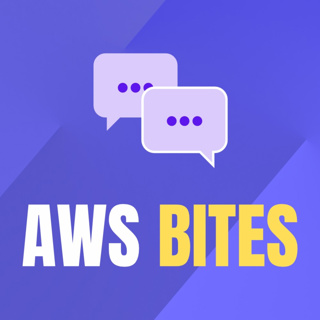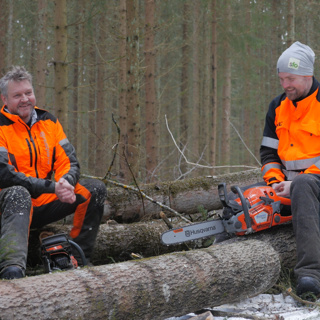
38. How do you choose the right compute service on AWS?
When it comes to choosing compute services on AWS, there are a lot of options, including EC2, ECS, Lambda, EKS… New ones keep emerging all the time! Selecting the right one for each application is no longer an easy choice. In this episode we discuss why you need compute services and what kinds of problems should be offloaded to something else entirely. We suggest how you can develop a methodology to make the selection process easier and less biased within your company. We discuss at a high level what are some of the different compute options available in AWS and finally we provide a few different options example use cases and describe how we picked the compute service for each. In this episode, we mentioned the following resources: - InfoQ article “A Recipe to Migrate and Scale Monoliths in the Cloud”: https://www.infoq.com/articles/cloud-migrate-scale/ - Our previous episode about migrating monoliths to the cloud: https://www.youtube.com/watch?v=GYa2RkYDfBQ - Article on choosing the right compute service: https://www.fourtheorem.com/blog/aws-compute This episode is also available on YouTube: https://www.youtube.com/AWSBites You can listen to AWS Bites wherever you get your podcasts: - Apple Podcasts: https://podcasts.apple.com/us/podcast/aws-bites/id1585489017 - Spotify: https://open.spotify.com/show/3Lh7PzqBFV6yt5WsTAmO5q - Google: https://podcasts.google.com/feed/aHR0cHM6Ly9hbmNob3IuZm0vcy82YTMzMTJhMC9wb2RjYXN0L3Jzcw== - Breaker: https://www.breaker.audio/aws-bites - RSS: https://anchor.fm/s/6a3312a0/podcast/rss Do you have any AWS questions you would like us to address? Leave a comment here or connect with us on Twitter: - https://twitter.com/eoins - https://twitter.com/loige #aws #compute #lambda
26 Maj 202229min

37. How do you migrate a monolith to AWS without the drama?
Migrating monoliths to the cloud can be a scary, expensive and time consuming and time consuming activity. Many companies try to avoid it even if it could be beneficial for them, just because they think it would require too much work and be too risky. But there are interesting compromises and incremental approaches that can be used to simplify and de-risk this kind of migration. The idea is that you don’t necessarily have to dramatically re-engineer your application to move it to the cloud (and start to take advantage of it). In this episode, based on an InfoQ article that we recently published, we discuss a fictional use case where a company with a monolithic application managed to move to the cloud with a minimum amount of change. The move to the cloud has brought more scalability and resilience for the company to move forward and expand. But it also brings new challenges and opportunities. We will discuss all of this in more detail and by the end of this episode you should have a checklist for migrating monoliths to the cloud with minimal effort. In this episode, we mentioned the following resources: - InfoQ article “A Recipe to Migrate and Scale Monoliths in the Cloud”: https://www.infoq.com/articles/cloud-migrate-scale/ - Our previous episode about other cloud migration strategies: https://www.youtube.com/watch?v=IDh4eQzbvyg - Our previous episode about the difference between CloudFormation and Terraform for infrastructure as code: https://www.youtube.com/watch?v=mLkOH2I0rX8 - Our previous episode about the pros and cons of CDK for infrastructure as code: https://www.youtube.com/watch?v=jjyNTNQdW2s This episode is also available on YouTube: https://www.youtube.com/AWSBites You can listen to AWS Bites wherever you get your podcasts: - Apple Podcasts: https://podcasts.apple.com/us/podcast/aws-bites/id1585489017 - Spotify: https://open.spotify.com/show/3Lh7PzqBFV6yt5WsTAmO5q - Google: https://podcasts.google.com/feed/aHR0cHM6Ly9hbmNob3IuZm0vcy82YTMzMTJhMC9wb2RjYXN0L3Jzcw== - Breaker: https://www.breaker.audio/aws-bites - RSS: https://anchor.fm/s/6a3312a0/podcast/rss Do you have any AWS questions you would like us to address? Leave a comment here or connect with us on Twitter: - https://twitter.com/eoins - https://twitter.com/loige #aws #monolith #migration
19 Maj 202232min

36. What’s new for JavaScript developers on AWS?
There are lots of options for programming languages on AWS these days but one of the most popular ones remains JavaScript. In this episode of AWS Bites we discuss what it’s like to develop with JavaScript, Node.js and TypeScript on AWS and what’s new in this field. We explore why you would choose JavaScript and what are the trade-offs that come with this choice. We present some of the main features of the all-new AWS SDK v3 for JavaScript. We discuss runtime support and tooling for AWS Lambda and finally some interesting developments in the JavaScript ecosystem for the cloud and AWS. - Our previous episode on What language to use for lambda: https://www.youtube.com/watch?v=S0tpReRa6m4 - AI as a Service by Eoin Shanaghy and Peter Elger (book): https://www.manning.com/books/ai-as-a-service - Node.js Design Patterns by Mario Casciaro and Luciano Mammino (book): https://www.nodejsdesignpatterns.com/ - AWS SDK for JavaScript v3 high level concepts (including command based model): https://docs.aws.amazon.com/AWSJavaScriptSDK/v3/latest/index.html#high-level-concepts - AWS SDK for JavaScript v3 paginators using Async Iterators: https://docs.aws.amazon.com/AWSJavaScriptSDK/v3/latest/index.html#paginators - Mocking support for the AWS SDK for JavaScript v3: https://aws.amazon.com/blogs/developer/mocking-modular-aws-sdk-for-javascript-v3-in-unit-tests/ - Various interesting benchmarks on different Lambda runtimes: https://github.com/theam/aws-lambda-benchmark - https://filia-aleks.medium.com/benchmarking-all-aws-lambda-runtimes-in-2021-cold-start-part-1-e4146fe89385 - https://www.simform.com/blog/aws-lambda-performance/ - Support for ESM modules in AWS Lambda (Node.js 14): https://aws.amazon.com/about-aws/whats-new/2022/01/aws-lambda-es-modules-top-level-await-node-js-14/ - The Middy Framework (middleware pattern for AWS Lambda): https://middy.js.org/ - Lambda Power Tools library for TypeScript: https://awslabs.github.io/aws-lambda-powertools-typescript/ - Yan Cui’s article on performance improvements with bundling: https://lumigo.io/blog/3-major-ways-to-improve-aws-lambda-performance/ - ZX project (scripting with JavaScript) by Google: https://github.com/google/zx Do you have any AWS questions you would like us to address? Leave a comment here or connect with us on Twitter: - https://twitter.com/eoins - https://twitter.com/loige
12 Maj 202224min

35. How can you become a Logs Ninja with CloudWatch?
In the age of distributed systems we produce tons and tons of logs. This is especially true for AWS when using CloudWatch logs. So how do we make sense of all these logs and how can we find useful information in them? In this episode we talk all about logs on AWS and we discuss the main concepts in CloudWatch for logs like Log Groups and Log Streams. We discuss how you can consume logs and how this used to be a big pain point with AWS CloudWatch logs and how now things are a lot better thanks to a relatively new feature called Log Insights. Finally we discuss some best practices that you should consider when thinking about logs for your distributed cloud applications. In this episode, we mentioned the following resources: - Our previous episode on CloudWatch alarms: https://www.youtube.com/watch?v=rk4QMJf6R4U - Analyzing log data with CloudWatch Logs Insights: https://docs.aws.amazon.com/AmazonCloudWatch/latest/logs/AnalyzingLogData.html - CloudWatch logs insights query syntax: https://docs.aws.amazon.com/AmazonCloudWatch/latest/logs/CWL_QuerySyntax.html - Pino logger for Node.js: https://getpino.io This episode is also available on YouTube: https://www.youtube.com/AWSBites You can listen to AWS Bites wherever you get your podcasts: - Apple Podcasts: https://podcasts.apple.com/us/podcast/aws-bites/id1585489017 - Spotify: https://open.spotify.com/show/3Lh7PzqBFV6yt5WsTAmO5q - Google: https://podcasts.google.com/feed/aHR0cHM6Ly9hbmNob3IuZm0vcy82YTMzMTJhMC9wb2RjYXN0L3Jzcw== - Breaker: https://www.breaker.audio/aws-bites - RSS: https://anchor.fm/s/6a3312a0/podcast/rss Do you have any AWS questions you would like us to address? Leave a comment here or connect with us on Twitter: - https://twitter.com/eoins - https://twitter.com/loige #aws #logs #cloudwatch
5 Maj 202231min

34. How to get the most out of CloudWatch Alarms?
CloudWatch is a great service for metrics. You get tons of metrics out of the box and you can also create your custom ones. One of the most important things you can do with metrics is to create alarms, so how do we get the most out of CloudWatch alarms? In this episode we share our insights and cover the different types of alarms that exist, how to create an alarm, what to do when an alarm is triggered, a few examples of useful alarms and some of the drawbacks of CloudWatch alarms and how to overcome them. In this episode, we mentioned the following resources: - Our previous episode on CloudWatch metrics: https://www.youtube.com/watch?v=vwo2jXfyooQ - SLIC Watch, a serverless framework plugin that generates sensible alarms and dashboard automatically: https://fth.link/slic-watch This episode is also available on YouTube: https://www.youtube.com/AWSBites You can listen to AWS Bites wherever you get your podcasts: - Apple Podcasts: https://podcasts.apple.com/us/podcast/aws-bites/id1585489017 - Spotify: https://open.spotify.com/show/3Lh7PzqBFV6yt5WsTAmO5q - Google: https://podcasts.google.com/feed/aHR0cHM6Ly9hbmNob3IuZm0vcy82YTMzMTJhMC9wb2RjYXN0L3Jzcw== - Breaker: https://www.breaker.audio/aws-bites - RSS: https://anchor.fm/s/6a3312a0/podcast/rss Do you have any AWS questions you would like us to address? Leave a comment here or connect with us on Twitter: - https://twitter.com/eoins - https://twitter.com/loige #aws #alarms #cloudwatch
28 Apr 202226min

33. What can you do with CloudWatch metrics?
CloudWatch is the main Observability tool in AWS and it offers a wide range of features: logs, metrics, dashboards, alarms and even events (recently moved into EventBridge). In this episode we are going to focus on CloudWatch metrics. We are going to discuss the characteristics of metrics in CloudWatch: namespaces, dimensions, units and more. What metrics you get out of the box and how to create your own. How to access and explore metrics. Finally we will compare CloudWatch to other providers like DataDog, New Relic, Honeycomb and Grafana + Prometheus and try to assess whether CloudWatch is enough or if you need to use other third-party services. In this episode, we mentioned the following resources: - How to send Gzipped requests with boto3 (which uses the PutMetricsData API as an example): https://loige.co/how-to-send-gzipped-requests-with-boto3 - CloudWatch service quota: https://docs.aws.amazon.com/AmazonCloudWatch/latest/monitoring/cloudwatch_limits.html - CloudWatch metrics stream for DataDog: https://www.datadoghq.com/blog/amazon-cloudwatch-metric-streams-datadog/ This episode is also available on YouTube: https://www.youtube.com/AWSBites You can listen to AWS Bites wherever you get your podcasts: - Apple Podcasts: https://podcasts.apple.com/us/podcast/aws-bites/id1585489017 - Spotify: https://open.spotify.com/show/3Lh7PzqBFV6yt5WsTAmO5q - Google: https://podcasts.google.com/feed/aHR0cHM6Ly9hbmNob3IuZm0vcy82YTMzMTJhMC9wb2RjYXN0L3Jzcw== - Breaker: https://www.breaker.audio/aws-bites - RSS: https://anchor.fm/s/6a3312a0/podcast/rss Do you have any AWS questions you would like us to address? Leave a comment here or connect with us on Twitter: - https://twitter.com/eoins - https://twitter.com/loige
21 Apr 202233min

32. What are the benefits of tags?
What are the benefits of Tags? You have probably seen that you can add tags to almost every resource in AWS… but should you really do it? And if you do it, what are the benefits? In today’s episode Eoin and Luciano cover what tags are, some examples of how to use them and what kind of benefits they can give you and your team. Finally we’ll give you a bunch of ideas on how to build a tagging strategy and get value from tags! In this episode, we mentioned the following resources: - Resource group tagging (https://docs.aws.amazon.com/resourcegroupstagging/latest/APIReference/overview.html) - Controlling access to AWS resources using tags https://docs.aws.amazon.com/IAM/latest/UserGuide/access_tags.html - Enforce tagging via SCP (Service Control Policies): https://docs.aws.amazon.com/organizations/latest/userguide/orgs_manage_policies_scps_examples_tagging.html#example-require-tag-on-create - Use AWS Config to create rules that can alarm if some resources are not compliant: https://aws.amazon.com/premiumsupport/knowledge-center/config-resource-non-compliant/ - Example on how to use CloudTrail to automatically tag newly created resources: https://aws.amazon.com/blogs/mt/auto-tag-aws-resources/ - Archived AWS white paper on tagging best practices: https://d1.awsstatic.com/whitepapers/aws-tagging-best-practices.pdf This episode is also available on YouTube: https://www.youtube.com/AWSBites You can listen to AWS Bites wherever you get your podcasts: - Apple Podcasts: https://podcasts.apple.com/us/podcast/aws-bites/id1585489017 - Spotify: https://open.spotify.com/show/3Lh7PzqBFV6yt5WsTAmO5q - Google: https://podcasts.google.com/feed/aHR0cHM6Ly9hbmNob3IuZm0vcy82YTMzMTJhMC9wb2RjYXN0L3Jzcw== - Breaker: https://www.breaker.audio/aws-bites - RSS: https://anchor.fm/s/6a3312a0/podcast/rss Do you have any AWS questions you would like us to address? Leave a comment here or connect with us on Twitter: - https://twitter.com/eoins - https://twitter.com/loige #aws #tags #cloudformation
14 Apr 202225min

31. CloudFormation or Terraform?
Should I use CloudFormation or should I use Terraform instead? If you are just starting to do Infrastructure as Code (IaaC) you probably have this question. In this episode we will discuss in detail how these two amazing pieces of technology compare against each other and what their features, weaknesses and strengths are. We will share our opinions based on our experience with these 2 technologies and guess what, for once we have a bit of clash of opinions! Can you guess who is in the Terraform camp and who is in the CloudFormation camp instead? In this episode, we mentioned the following resources: - A tutorial on how to create resources conditionally with CDK (and CloudFormation): https://loige.co/create-resources-conditionally-with-cdk - An article to understand in depth how to use secrets management with SSM and SecretsManager together with CloudFormation: https://dev.to/eoinsha/3-ways-to-read-ssm-parameters-4555 - Ben Kehoe’s tweet about switching from CloudFormation to Terraform: https://twitter.com/ben11kehoe/status/1158758917515763712 - Terraform null resources: https://registry.terraform.io/providers/hashicorp/null/latest/docs/resources/resource - CloudFormation Macros: https://docs.aws.amazon.com/AWSCloudFormation/latest/UserGuide/macros-example.html - How to workaround missing CloudFormation features (by Cloudonaut): https://cloudonaut.io/three-and-a-half-ways-to-workaround-missing-cloudformation-support/ - Org-formation: https://github.com/org-formation/org-formation-cli - How to create accounts in an org with Terraform: https://registry.terraform.io/providers/hashicorp/aws/latest/docs/resources/organizations_account - Control Tower Account Factory for Terraform: https://learn.hashicorp.com/tutorials/terraform/aws-control-tower-aft - Pulumi: https://www.pulumi.com/ - Cloudonaut’s comparison of CloudFormation with Terraform: https://cloudonaut.io/cloudformation-vs-terraform/ - Cloudonaut’s free CloudFormation templates: https://templates.cloudonaut.io/en/stable/ Do you have any AWS questions you would like us to address? Leave a comment here or connect with us on Twitter: - https://twitter.com/eoins - https://twitter.com/loige
7 Apr 202230min





















